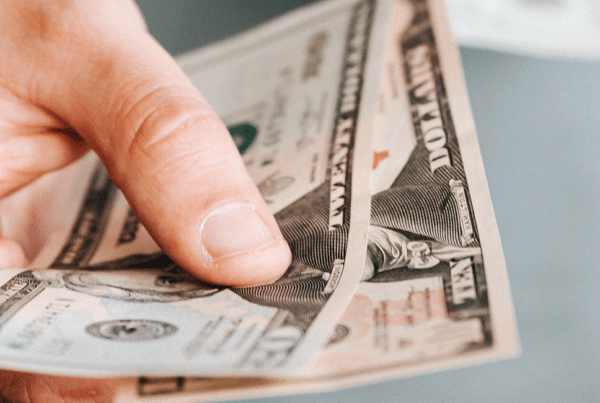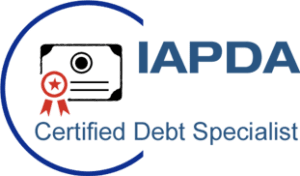
New credit and debt relief programs.
If you are in a debt relief program, the goal is to pay off your debts significantly faster, and at drastically reduced rates. For consumers that have reached a point with their unsecured debt that the interest will prevent a realistic payoff, a relief plan can be a life saver. Consumers often wonder if they can open new lines of credit during a relief program.
It’s no secret that most debt relief programs will have an adverse affect on your credit. Options like bankruptcy cause sever damage to your credit (though it is quite possible to recover). Other options, like settlement or consolidation will also likely lower your score due to the nature of the programs. However, these types of relief programs are far easier to recover from than the former.
Before we dive into whether or not you can qualify for credit while in a relief program, there’s a few things to remember. The first question should be, are you ready for a new line of credit? With your current unsecured debt in a relief program, it can be tempting to pick up a new credit card as your accounts are settled and your score recovers.
The danger here is falling into the same traps that landed you in the relief program to start with. Overspending and reliance on credit should be managed before jumping back into the credit pool. Once you feel you can manage a low balance credit card for rebuilding purposes only, then you should start exploring your options.
Can I get approved while in a debt relief program?
During the early stages of a relief program, it’s highly unlikely you will be approved for any type of credit or unsecured loan. Put yourself in the lender’s shoes. The applicant has a pile of unsecured debt that has been turned over to a relief program. This means those debts will be settled quickly, and for far less than the original balance. A lender will see this as an extreme risk, and avoid at all costs.
This isn’t to say you won’t be able to qualify for a secured line of credit. A secured loan has collateral, so if the decision to lend proves troublesome, the lender can repossess said collateral. Don’t forget, even secured lines of credit come with interest rates. So, while you may be able to open one during a relief program, beware of the high interest rates and fees associated.
Not opening any new credit lines is usually the best move while trying to get out of debt. If you are planning a big purchase, such as a house or a car, your best bet is to complete this purchase before or after your relief program.
Should I open new credit accounts while in a debt relief program?
If you seriously want to get out of debt, it’s a bad idea to think of new credit lines, be it an auto loan, mortgage or a credit card.
Opening new cards for promotional interest rates or discounts and falling short on money is how you got here in the first place! On the other hand, a debt relief program’s purpose is to have you out of debt as fast as possible, with easy and affordable monthly payments. Running up new debt nullifies the very purpose of it.
Rather than trying to open new lines of credit, consider keeping one credit card out of your settlement program. This way, you can continue to maintain good credit usage in tandem with the natural reduction from the relief program.
Can I even get approved for credit during a debt relief program?
A creditor offering you new credit will naturally first review your credit report, credit score, and income. This will tell the lender how you’ve handled previous debts and your ability to repay new ones.
A reputable debt relief company will not communicate about your participation in the program to credit agencies. Still, some of your enrolled creditors may provide this vital information to your credit report. So, it is possible that you may be denied credit based on your already existing debt relief program.
You likely have a high debt-to-income ratio if you are enrolled for a debt relief program, which will play a big role in approvals from lenders. While debt to income ratio doesn’t directly affect your credit score, it is a large factor lenders look at it when deciding.
It is possible to get approved while participating in a debt management program. A word of caution: don’t fall prey to repeat behavior. If you do open a new credit account, be extra-cautious about utilizing it, and ensure to pay it off on time each month.
Can you get a mortgage if you are in a debt management plan?
Is it possible, yes. Is it advisable? No. It will not be easy to qualify, due to your enrollment in a relief program. Remember, debt relief programs are in place to help consumers overwhelmed with debt. For lenders, this is considered a high risk loan, especially with the amount required to purchase a home.
How does the opening of new credit while in a debt relief program impact the credit score?
Depending upon the quantum of new debt you are going to incur and your payment history, opening new credit can have both a positive and/or negative impact on your credit scores. If you ensure paying a little percentage of your available credit (say, less than 30%) on time every month, new credit will help improve your credit score. On the other hand, if you use a large percentage of available credit and miss payments, the new credit can badly affect your scores.
What you don’t want to do is take the potential hit to your credit twice. One hit that naturally occurs during a debt relief program, and another for accruing more debt with an inability to repay.
How long before you can start acquiring new credit after successful relief program?
The answer is, it depends. Here’s a few scenarios we see on a regular basis –
- A consumer enters all of their credit cards and unsecured debt. For these consumer, obtaining a new credit card within the first 6 months to a year of a relief program will likely not be possible.
- A consumer enters all but one credit card into the relief program. These consumers choose to exclude one of their credit cards from the program. Generally the one with the best rates. With this strategy, you can continue building good credit on the card left out, while the relief program causes your score to dip. This is a good way to combat the drop in credit score from the get go.
- A consumer enters all of their debt into a relief program, and 1 year has passed. During this year, most of your debtors have not been receiving normal payments and have reported you as delinquent to the credit agencies. At this stage, some of your debt accounts are settled and paid off. You may find it possible at this stage to acquire new credit, but again, tread very carefully.
In closing, when a consumer makes the choice to enter a debt relief program, they’re doing so because their debt is unmanageable on their own. Generally speaking, many clients we enroll come to us with troubled credit to start with. For these consumers, additional small drops to their credit are non-issues.
However, if you enter a debt relief program with stellar credit, expect it to drop a bit. As discussed above, it’s very important to not fall back into reliance on credit. Focus on rebuilding your credit, correctly and without credit cards factored into your budget.
Here’ are some additional resources for rebuilding your credit before, during, or after a debt relief program. Click each title to view the article.
- Simple Ways to Improve Your Credit Score
- How to Rebuild Credit
- 5 Strategies for Rebuilding Your Credit
Your partner in debt relief,
Consumer First Financial





